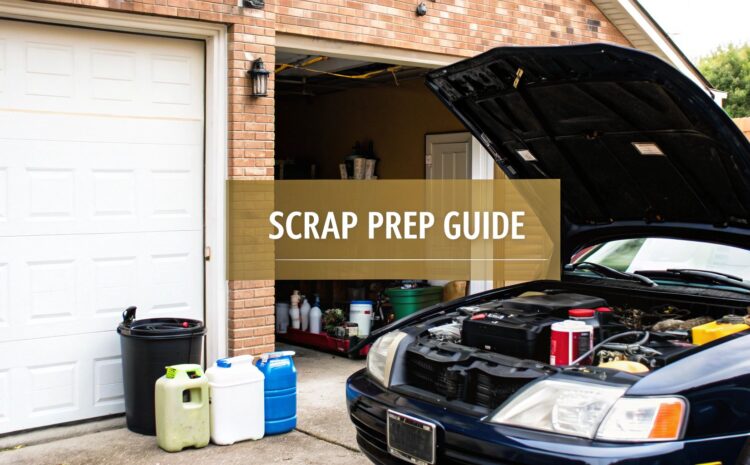
How to Prepare Your Vehicle for Scrapping: Easy Step-by-Step Guide
Getting your car ready for the scrap yard isn't just about waiting for a tow truck to show up. It's a final, essential checklist to make sure everything is handled correctly, protecting you from future headaches and helping you get the best price. Think of it as a proper send-off for your old motor.
Why You Can't Skip the Prep Work
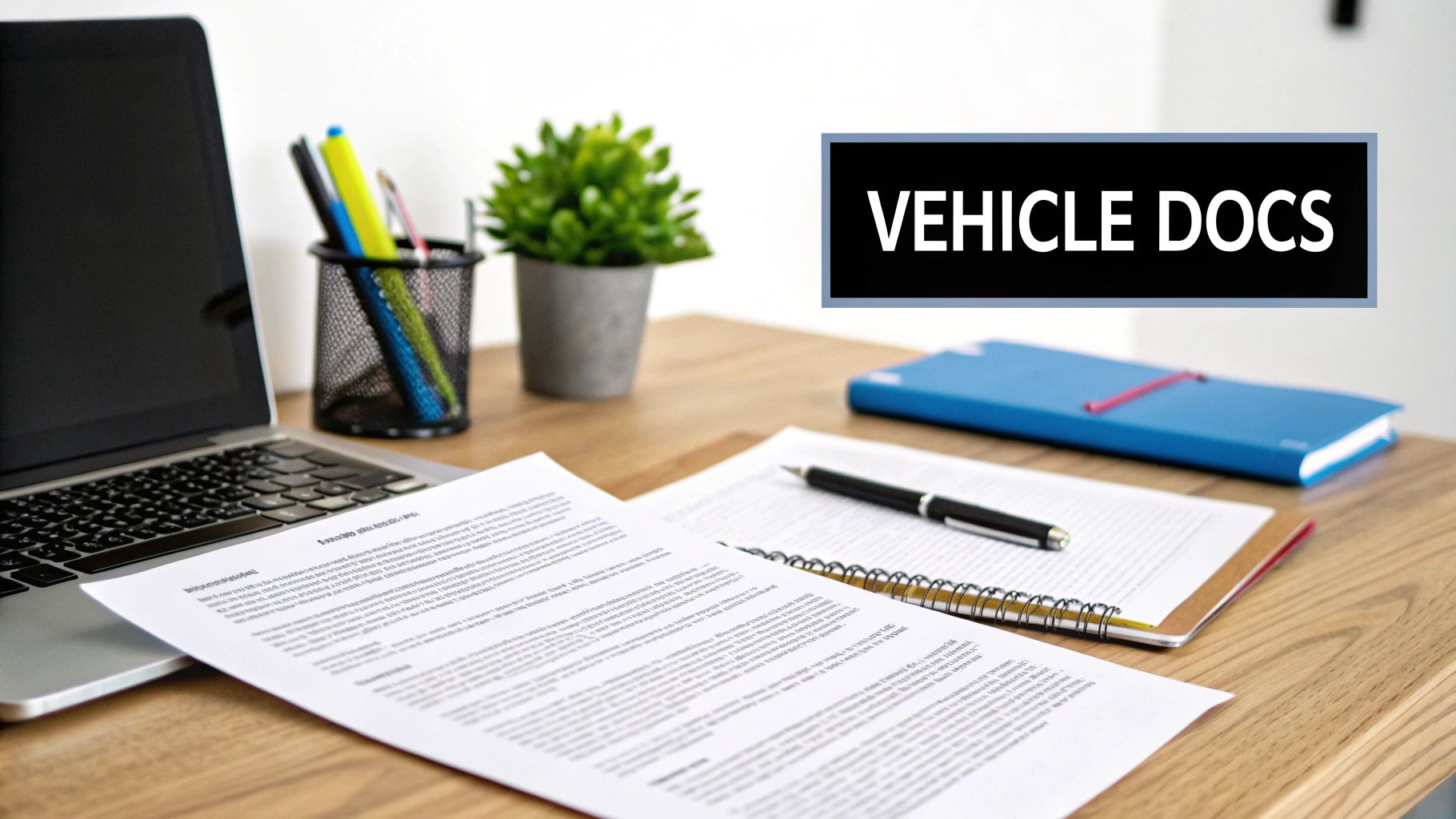
It’s easy to think that once a car is destined for scrap, your job is done. But I've seen countless owners miss a few simple steps, which can cost them money or lead to frustrating paperwork issues later on.
Properly prepping your vehicle is so important for a couple of big reasons. First, it keeps you on the right side of the law. The DVLA has strict rules, and following them protects you from fines. Second, it can genuinely affect the cash you walk away with. A car that's ready to go is simply less hassle for a scrap service to process. Our guide on how to scrap your car walks you through the entire journey.
The Bigger Picture: Environment and Your Wallet
These days, the decision to scrap a car is often tied to environmental schemes. Take London's Ultra Low Emission Zone (ULEZ), for instance. Its expansion across all London boroughs caused a massive spike in scrapping. Demand jumped by 53% inside the city and an incredible 78% in the areas just outside.
This shows just how much green policies are shaping when and why people choose to scrap their cars. When you get your car ready the right way, you’re helping the whole recycling system run more smoothly.
By taking a few minutes to prepare your vehicle, you're not just ticking boxes. You're making it easier to recover valuable metals and materials, which is a win for the environment.
Getting the Best Possible Outcome
A few final checks can make a real difference to your payment and how smoothly the whole thing goes. Smart preparation really boils down to three things:
- Sorting the Paperwork: Have your V5C logbook handy. It’s the proof of ownership that makes the DVLA process a breeze.
- Clearing Out Your Stuff: Do one last, thorough sweep of the glovebox, under the seats, and in the boot. You’d be surprised what people leave behind!
- Knowing the Rules: Understand what you’re allowed to remove and what has to stay. Taking the wrong parts can cause safety issues or even break the law.
Getting these details right guarantees a hassle-free, profitable, and legally sound end for your vehicle.
Navigating the Essential DVLA Paperwork
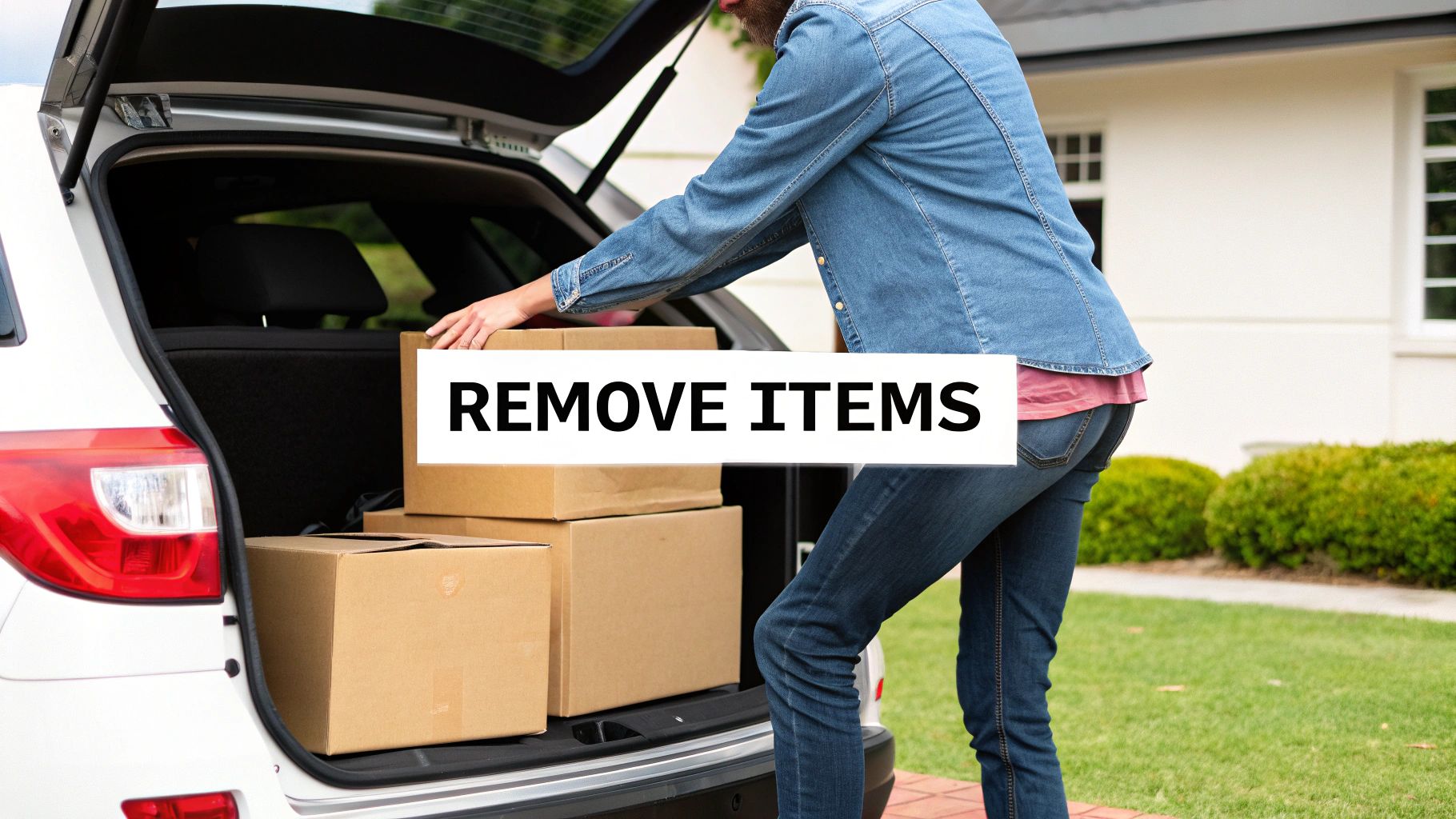
Let's be honest, dealing with official forms can feel like the biggest headache when scrapping a car. But getting the paperwork right is your legal shield—it's how you prove to the DVLA that you're no longer responsible for the vehicle. It's actually more straightforward than most people think.
The key document you'll need is your V5C logbook. This is your proof of ownership, giving you the legal right to scrap the vehicle. If you can't find it, don't panic. You can still go ahead by showing the scrap company your photo ID and a recent utility bill, but you'll have to notify the DVLA yourself in writing. Having the V5C just makes the whole process smoother and quicker.
Completing the V5C and Notifying the DVLA
When our driver arrives to collect your car, they'll be from a registered Authorised Treatment Facility (ATF). This is the point where you'll need to fill out a specific section of your V5C.
- On older V5C logbooks, you're looking for Section 9.
- For newer logbooks issued after April 2019, it's Section 4.
You’ll complete this section with the collection agent, adding the date of sale and the ATF's details. Once that's done, you simply tear off that slip and post it to the DVLA. This single action is what officially transfers ownership, releasing you from any future fines or tax liabilities for the car.
Your Final Proof: The Certificate of Destruction (CoD)
This is a crucial document issued by the ATF. It confirms your vehicle has been disposed of legally and in an environmentally friendly way. If you haven't received your CoD within seven days, make sure you chase it up with the facility. It's your ultimate proof.
It's also worth noting that many people declare their vehicle off-road with a Statutory Off Road Notification (SORN) just before scrapping. In fact, official figures show a 12% year-on-year increase in SORN declarations, with the total now around 2.677 million. This rise highlights just how many cars are being taken off UK roads, making it more important than ever to follow the correct DVLA procedures.
If you're thinking of going down the SORN route first, our complete guide on how to SORN your vehicle walks you through everything you need to know.
Doing a Final Sweep for Personal Items
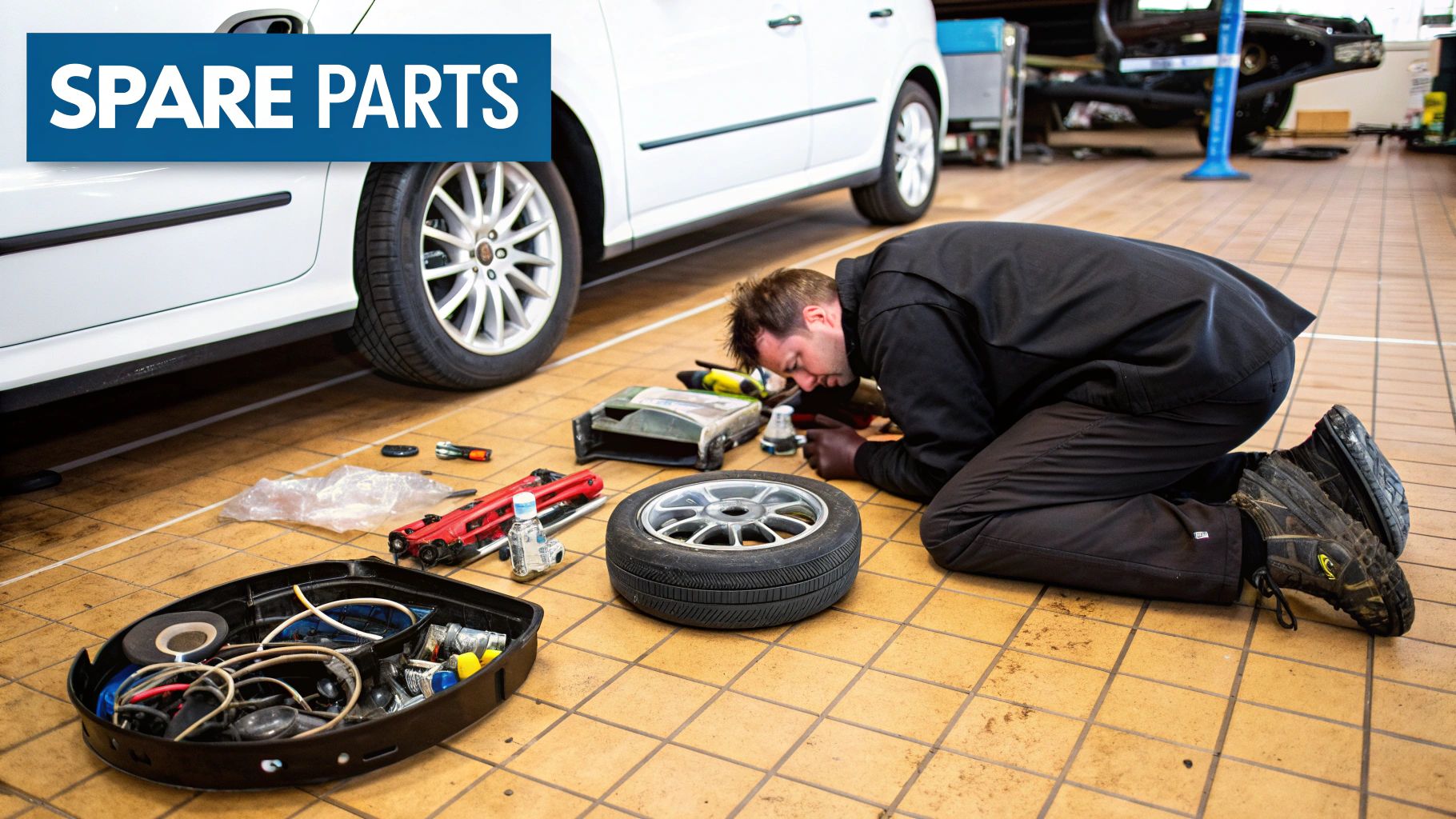
Think of all the years you've had your car. It’s been more than just a way to get from A to B; it's practically been a mobile storage locker for everything from loose change to important documents. Before you say your final goodbyes, it’s absolutely crucial to do one last, incredibly thorough search for personal belongings. It's a step people often overlook in their haste, only to kick themselves later when they realise something valuable is gone for good.
This isn’t just a quick glance in the glove box and boot. Over thousands of miles of family holidays, daily commutes, and school runs, things have a funny way of disappearing into the car's nooks and crannies. We’ve had customers tell us they’ve found everything from forgotten birthday cards and sentimental photos to a surprising amount of cash stashed in a sun visor.
Your Deep-Clean Checklist
To be certain you haven't left anything behind, you need to be systematic. Going through the car with a plan ensures a smooth handover to the collection team and gives you complete peace of mind.
Make sure you've checked these often-forgotten spots:
- Under and Between the Seats: Grab a torch and have a proper look. Don't forget to slide the seats all the way forward and back to see what's rolled underneath.
- Seat Pockets and Door Bins: These areas are magnets for old receipts, stray charging cables, and sunglasses you thought you'd lost ages ago.
- Sun Visors: A classic hiding place. Check behind the vanity mirror and in any clips or straps – perfect spots for stashing parking permits or emergency notes.
- CD Player and Centre Console: If you still have a CD player, pop out any discs. And really get into those deep cubby holes in the centre console; they’re notorious for hiding spare keys and loose change.
A final triple-check is always a good idea. Once a service like Fast Scrap Car collects your vehicle, it heads straight into the recycling process. Anything left inside at that point is lost forever. Taking an extra 20 minutes now can save you a world of regret down the line.
This final search isn't just about finding lost treasures. It's about drawing a line under your ownership of the car. It makes the job easier for the Authorised Treatment Facility and cleanly finalises your responsibility, making the entire scrapping process that much simpler.
What Can You Take Out of the Car? And What Should You Leave In?
So, your car is heading for the scrap heap. It’s natural to wonder if you can pull out a few valuable bits and pieces to sell separately. I've seen it many times – people want to maximise what they get back. While you can certainly do this, you need to know where to draw the line. It's not just about your final quote; it's a matter of safety and staying on the right side of the law.
The best rule of thumb? If you added it yourself, you can probably take it with you. We're talking about aftermarket upgrades that aren't fundamental to the car's operation.
Here’s what’s usually fair game:
- Your Sound System or Sat Nav: That fancy stereo or clip-on GPS you installed? Absolutely, take it. It has no bearing on the car's scrap weight.
- Good Tyres: If you’ve recently put a new set of premium tyres on, it feels like a waste to let them go. You can swap them for an old set of road-legal tyres. Just make sure the car can still be rolled safely onto the collection truck.
- Private Number Plates: This is a big one. You must remove your private plates and follow the DVLA’s retention process before you even think about scrapping the vehicle. Once the car is gone, it’s too late.
Leave the Oily Bits to the Professionals
Now, let's get serious. There are parts of the car you absolutely cannot touch. The most important of these are anything containing fluids. This isn't just a suggestion; it's a legal requirement. An Authorised Treatment Facility (ATF) is the only place equipped to handle the hazardous materials inside a car. Trying to do this on your own drive is incredibly dangerous and illegal.
A Word of Warning: Don't even think about draining fluids like petrol, oil, coolant, or brake fluid. These are nasty, flammable, and toxic substances. An ATF has the proper equipment and procedures to depollute the vehicle safely and legally. Messing with these yourself is a risk not worth taking.
Just to give you an idea of what we’re dealing with, take a look at the typical amount of hazardous liquid an ATF needs to drain from a single car.
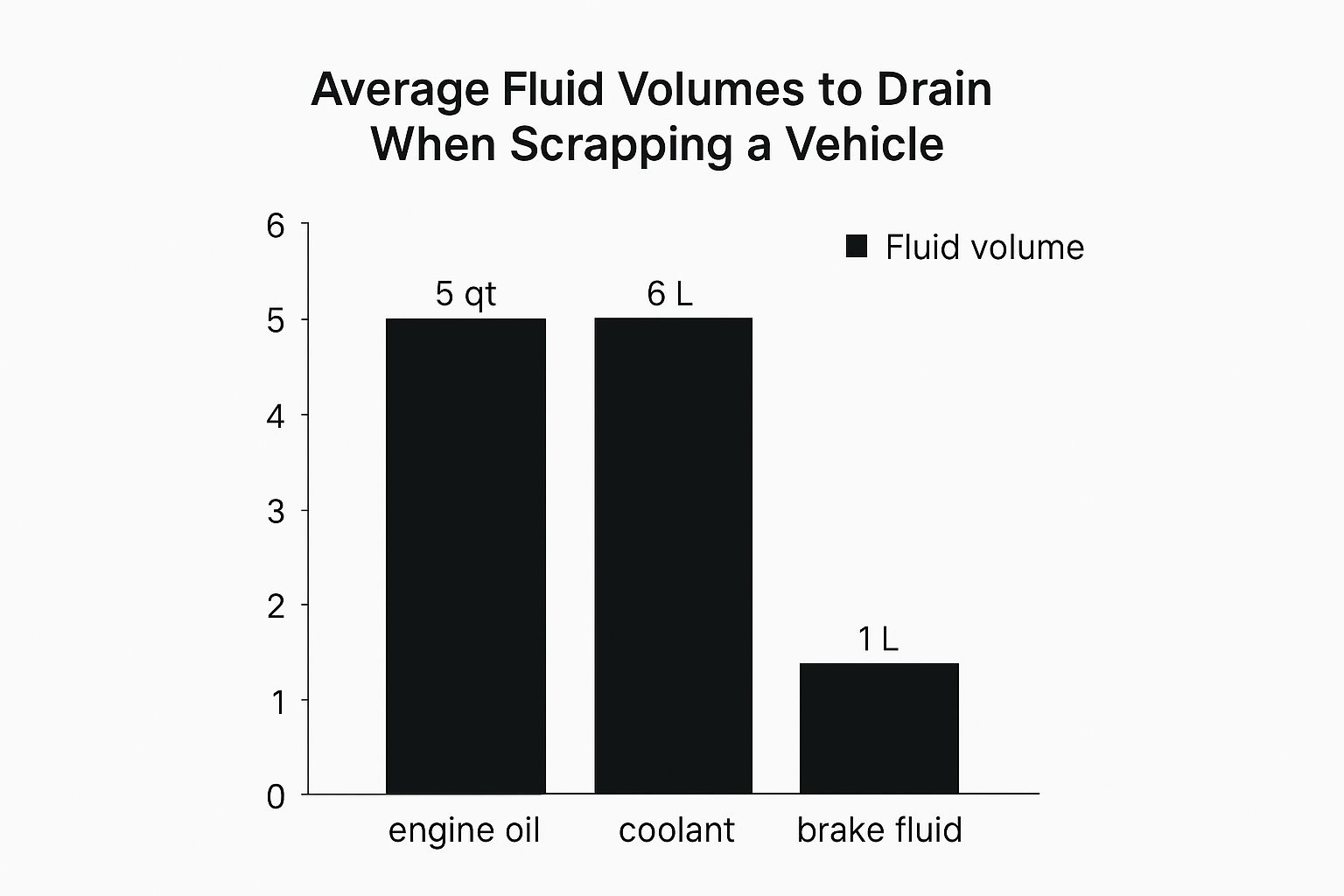
Those numbers show just how much harmful material needs to be handled. This is precisely why the job is left to licensed experts. Remember, your scrap quote is based on the car's weight and its core metal components. Leaving the fluids in won't reduce your payment. Your job is to take your personal extras and let us handle the rest.
To make it crystal clear, here’s a quick guide on what to take versus what to leave for the ATF.
Parts You Can Remove vs Parts to Leave for the ATF
| Component | Can You Remove It? | Considerations & Safety Advice |
|---|---|---|
| Aftermarket Stereo/Speakers | Yes | These are personal add-ons. You can take them without affecting the scrap value. |
| Sat Nav Unit | Yes | If it's not integrated into the dashboard, feel free to remove it. |
| Private Number Plates | Yes, but… | Crucial: You must complete the DVLA retention process before the car is collected. |
| Battery | No | Batteries contain acid and lead. They must be removed and recycled by the ATF. |
| Catalytic Converter | No | This is a core part of the vehicle, and its value is factored into your quote. ATFs are targeted by thieves for these, so removal is a red flag. |
| Engine Oil / Coolant / Petrol | Absolutely Not | Extremely hazardous, flammable, and illegal to drain yourself. This is a job for the ATF only. |
| Wheels & Tyres | Maybe | You can swap good tyres for old, road-legal ones. The car must still have four wheels and be able to roll for collection. |
Ultimately, common sense is your best guide. If removing something feels dangerous or complicated, it's best to leave it be. Stick to the easy wins like your stereo and personal items, and let the professionals at the ATF manage the rest safely.
Your Final Checklist Before Collection Day
The big day is here! With the paperwork sorted and your car cleared of personal belongings, you're on the home stretch. This final checklist covers those last-minute details that are easy to forget but make all the difference for a smooth handover. It can even put a bit of extra cash back in your pocket.
First things first: your insurance. The moment your car is collected and you have the Certificate of Destruction (CoD) details, call your insurance provider to cancel the policy. Most insurers will refund you for any unused premium, which is always a nice bonus. Don’t just let the policy lapse—you're entitled to that money.
Reclaim Your Tax and Clear the Way
Next, let's talk about your vehicle tax (VED). As soon as you've told the DVLA your car has been scrapped, they'll automatically refund you for any full months left on your tax. This gets triggered when the Authorised Treatment Facility (ATF) processes the CoD, or when the DVLA gets your V5C slip.
It’s a principle that’s been around for a while. Think back to the 2009 UK scrappage scheme, where the government offered £1,000 for older cars. This just goes to show there's recognised value in properly decommissioning a vehicle and tying up loose financial ends like road tax and insurance. You can read more about these kinds of vehicle scrappage scheme incentives.
Here's a pro tip straight from our collection drivers: please make sure our recovery truck can get to your vehicle safely and easily. If it's tucked away in a tight spot or on a busy street, just giving us a quick heads-up helps us plan the perfect collection.
Finally, a few practical points about the car itself. We're equipped to handle almost anything, but a little preparation ensures the collection goes off without a hitch.
- Flat Tyres: Got a flat? No problem. Our recovery trucks can manage it, but we always appreciate a quick call to let us know beforehand.
- Keys: Just have the keys ready to hand over to our driver when they arrive.
- Clear Path: Take a quick look around and move any bins, bikes, or other cars that might be blocking the path to your vehicle.
And that's it! Ticking off these final steps is the last piece of the puzzle. It transforms what could be a stressful day into a simple, straightforward, and rewarding experience.
Common Questions About Scrapping Your Car
It's completely normal to have a few last-minute questions, even after you’ve done your homework on how to get your car ready for the scrap yard. We get these queries all the time, so let's clear up some of the most common ones to give you peace of mind.
Your Final Queries Answered
Probably the biggest worry we hear is about a lost V5C logbook. What happens if you can't find it? Don't panic – you can absolutely still scrap your car. You’ll just need to use other documents to prove you're the owner. A photo ID and a recent utility bill with your address will usually do the trick.
Once the car is collected, the only extra step is telling the DVLA yourself. You'll need to write to them with your details, the car's registration number, the date of sale, and the name and address of the Authorised Treatment Facility (ATF) that took it.
Another question that comes up a lot is whether draining fluids like petrol or oil will get you a better price. The answer is a hard no. In fact, please don't even try. ATFs are set up to handle these hazardous materials safely and legally. Messing with them yourself is incredibly dangerous, not to mention illegal. The scrap value is based on the car's weight in metal, so any tiny bit you might gain isn't worth the risk. Leave it to the experts.
Finally, people often wonder about the Certificate of Destruction (CoD). How does that work?
The Authorised Treatment Facility that scraps your car is required by law to issue a Certificate of Destruction. This is your official proof that the vehicle has been legally destroyed and is no longer your responsibility.
This certificate is your key document. It should arrive by email or post within seven days. If you haven't received it in that time, make sure you chase it up with the ATF directly.
Got more questions? We’ve got more answers over in our detailed scrapping car FAQ section.
Ready to turn your old car into cash with a trusted, hassle-free service? Contact Fast Scrap Car today for a competitive quote and a swift, professional collection in London and Surrey. Get your instant offer at https://fastscrapcar.co.uk.
